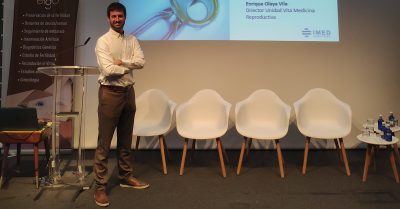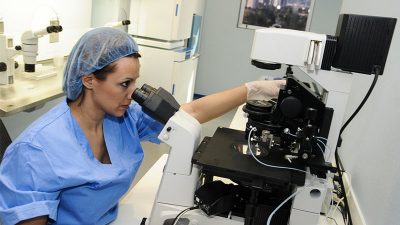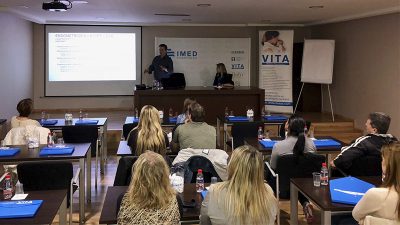Genetic Matching: Genetic Compatibility Test
Thanks to advances in reproductive medicine, today it is possible to know if both members of a couple are genetically compatible to give birth to a healthy child.
This can be achieved through the Genetic Compatibility Test or Genetic Matching.
What is the genetic compatibility test?
The Genetic Compatibility Test or Genetic Matching, is a blood test that allows to evaluate the genetic compatibility of the couple and thus avoid the transmission of hundreds of genetic diseases. This test identifies hundreds of hereditary diseases, in order to minimize the risks of the baby to suffer from genetic diseases.
Genetic Matching or the genetic compatibility test is carried out by means of a simple blood test on both members of the couple. This test identifies hundreds of diseases by analyzing thousands of gene mutations in search of carriers of hereditary diseases. The data is crossed and compared to determine if they can transmit any of the studied diseases.
Genetic Matching ensures that both members are genetically compatible before they seek to achieve pregnancy naturally or through assisted reproduction treatments, avoiding the transmission of genetic diseases to their children.
This test is also recommended in case of assisted reproduction treatment with sperm or egg donation, in order to study the genetic compatibility with the assigned donor. That is what is called “Donor Screening”.
Detected Genetic diseases
- Cystic fibrosis
- Spinal Muscular Atrophy
- Autosomal Recessive Hearing Loss Type 1A
- Alpha Thalassaemia
- Beta Thalassaemia
- Familial Mediterranean Fever
- Phenylketonuria
- Pompe disease
- Alport syndrome
- Glucose 6 Phosphate Dehydrogenase (G6PD) Deficiency
- Smith-Lemli-Opitz síndrome (SLOS)
- Tay Sachs disease
- Stargardt’s disease
- Leber’s Congenital Amaurosis (LCA)
- Usher syndrome
- Harboyan syndrome
For whom is this test indicated?
Even if we do not have symptoms or a family history of any disease, anyone can be carrier of a recessive genetic disease. Almost all of us have some mutation in our genes. This does not imply that it manifests itself in the form of a disease though.
The problem comes when a couple carries the same recessive genetic disease, carrying the same mutation of a certain gene. In this situation, the chances of the children inheriting the two altered genes, and therefore of developing the disease, are 25 percent. Although the proportion of people with these “rare diseases” is very low, they are highly disabling diseases and they negatively affect the quality of life, so it is important to take them into account.
The Genetic Compatibility Test studies the genes of the couple to indicate the compatibility between them. This “Genetic Matching” test is also performed on sperm and egg donors whose material will be used in assisted reproduction treatments such as Artificial Insemination or In Vitro Fertilisation.
Therefore, it is recommended to perform this test to detect hereditary diseases:
- Before trying to get pregnant, either naturally –since it is good to know the risk of suffering from a genetic disease– or through an assisted reproduction treatment, in order to determine the best procedure in each case.
- Before carrying out a treatment with gametes from a donor (ovum or semen), since it will enable us to select a donor who is not a carrier of the same mutation as the member of the couple that provides the gametes.
What happens if the test reveals that the couple is not genetically compatible?
If Genetic Matching detects a problem, it will be possible to prevent the child from being born with the disease. In this case, the couple can undergo an In Vitro Fertilisation treatment to study the embryos in the laboratory and detect the healthy embryos that are not carriers of the disease, these being the ones that will be transferred to the mother’s uterus. This process is carried out through a Preimplantation Genetic Diagnosis (PGD), a technique that is increasingly more used by couples to prevent the transmission of rare diseases to their children.
In the event that the pregnancy is sought through a donor, the most compatible one will be previously chosen to avoid unsatisfactory results. This protocol is called “Donor Screening” and allows us to rule out the donors who carry some of the most common hereditary diseases.
At VITA we work hard to help many families fulfill the dream of starting a family by offering assisted reproduction treatments with excellent success rates, preventing future babies from genetic diseases that could have been avoided through a simple Genetic Compatibility Test.




